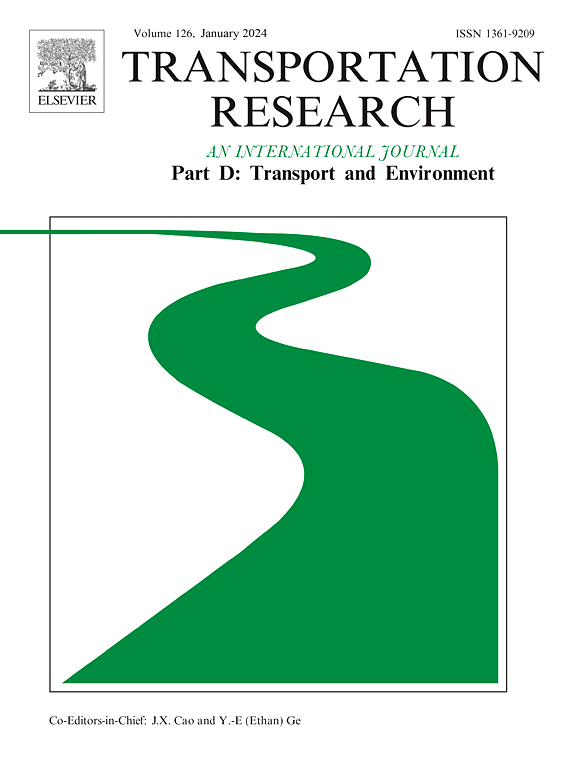Vocs pollution and respiratory exposure in commercial and residential underground parking garages
IF 7.3
1区 工程技术
Q1 ENVIRONMENTAL STUDIES
Transportation Research Part D-transport and Environment
Pub Date : 2024-10-21
DOI:10.1016/j.trd.2024.104472
引用次数: 0
Abstract
The indoor air quality in Underground Parking Garages (UPGs) has deteriorated significantly, primarily due to the high concentrations of particulate matter and volatile organic compounds (VOCs) emitted by idling or low-speed motor vehicles. However, the compositional characteristics and respiratory exposure to VOCs in UPGs have not been quantitatively analyzed. To establish a method for investigating the respiratory exposure to VOCs among different populations in UPGs, a three-dimensional dynamic diffusion model of indoor pollutants was developed based on monitoring data from 116 components in various UPGs in a large city in northern China. The results indicated that air pollution in underground spaces poses significant health risks to workers and children. Furthermore, a comprehensive approach is essential for improving ventilation capacity and air quality in underground transportation spaces.
商业和住宅地下停车场的 Vocs 污染与呼吸道接触
地下停车场(UPG)的室内空气质量严重恶化,主要原因是空转或低速行驶的机动车辆排放出高浓度的颗粒物和挥发性有机化合物(VOC)。然而,目前还没有对 UPG 中 VOC 的成分特征和呼吸道接触 VOC 的情况进行定量分析。为了建立一种方法来调查不同人群在地下石油气中接触 VOCs 的情况,研究人员根据中国北方某大城市不同地下石油气中 116 种成分的监测数据,建立了室内污染物的三维动态扩散模型。结果表明,地下空间的空气污染对工人和儿童的健康构成了重大威胁。此外,要提高地下交通空间的通风能力和空气质量,必须采取综合措施。
本文章由计算机程序翻译,如有差异,请以英文原文为准。
求助全文
约1分钟内获得全文
求助全文
来源期刊
CiteScore
14.40
自引率
9.20%
发文量
314
审稿时长
39 days
期刊介绍:
Transportation Research Part D: Transport and Environment focuses on original research exploring the environmental impacts of transportation, policy responses to these impacts, and their implications for transportation system design, planning, and management. The journal comprehensively covers the interaction between transportation and the environment, ranging from local effects on specific geographical areas to global implications such as natural resource depletion and atmospheric pollution.
We welcome research papers across all transportation modes, including maritime, air, and land transportation, assessing their environmental impacts broadly. Papers addressing both mobile aspects and transportation infrastructure are considered. The journal prioritizes empirical findings and policy responses of regulatory, planning, technical, or fiscal nature. Articles are policy-driven, accessible, and applicable to readers from diverse disciplines, emphasizing relevance and practicality. We encourage interdisciplinary submissions and welcome contributions from economically developing and advanced countries alike, reflecting our international orientation.

 求助内容:
求助内容: 应助结果提醒方式:
应助结果提醒方式:


